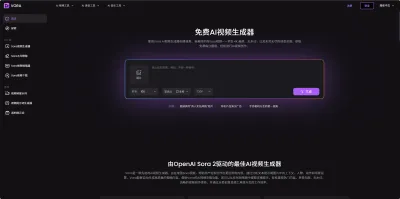<img src="https://user-images.githubusercontent.com/4738426/33545371-e652d482-d8d5-11e7-9ea5-c676d9313378.png" height="50"/>
This is the development branch for Dicoogle 3. See here for the development line of Dicoogle 2, which is being phased out.
Dicoogle is an extensible, platform-independent and open-source PACS archive software that replaces the traditional centralized database with a more agile indexing and retrieval mechanism. It was designed to support automatic extraction, indexing and storage of all meta-data detected in medical images, including private DICOM attribute tags, without re-engineering or reconfiguration requirements.
The architecture of Dicoogle is described in the following articles:
- Lebre, R., Pinho, E., Jesus, R. , Silva, L.A.B., Costa, C. Dicoogle Open Source: The Establishment of a New Paradigm in Medical Imaging. 2022 Journal of Medical Systems 46: 77. doi:10.1007/s10916-022-01867-3 [link]
- Lebre, R., Pinho, E., Silva, J.M., Costa, C. Dicoogle Framework for Medical Imaging Teaching and Research. 2020 IEEE Symposium on Computers and Communications (ISCC) [link]
- Valente, F., Silva, L.A.B., Godinho, T.M., Costa, C. Anatomy of an Extensible Open Source PACS. J Digit Imaging (2016) 29: 284. doi:10.1007/s10278-015-9834-0 [link]
Our official website is at https://www.dicoogle.com. A few essential plugins for Dicoogle are available to download there, as well as a built jar of the Dicoogle platform. To learn how to use Dicoogle, please see our Learning Pack. To build the core platform yourself, please see the section on Building Dicoogle below. The learning pack also has a page on Building Dicoogle.
Brief Documentation
Setup Dicoogle Platform Environment
-
Copy dicoogle.jar to the installation folder. For example DicoogleDir/
-
Create the Folder DicoogleDir/Plugins.
This folder will hold the plugins used by our instance of the Dicoogle Platform.
-
Next, copy the desired plugins into the DicoogleDir/Plugins Folder.
The typical setup of Dicoogle involves the deployment of an Indexing and Query Plugin. We supply an implementation of such plugin based in Apache Lucene.
-
Run Dicoogle.
Dicoogle may be run as a server:
java -jar dicoogle.jar -sTo load the server and open Dicoogle's user interface with the default browser:
java -jar dicoogle.jar
Available Plugins
We provide a few plugins at the official website, in the Downloads page.
-
Lucene Index/Query Plugin - (lucene.jar)
Plugin Based on Apache Lucene to support indexing and querying of DICOM meta-data. With this plugin set, it is possible to index nearly meta-data and perform free text, keyword-based, and range-based queries.
-
File Storage Plugin - (filestorage.jar)
Plugin used for the storage of DICOM Files. This plugin is necessary in order to use Dicoogle as a complete DICOM Storage Provider. The core platform provides a fallback implementation which supports reading (but not storing) files from the local file system.
For storage purposes, our file storage plugin maps the DICOM hierarchical organization (Patient->Study->Series->Image) into a directory tree in the file system. Every object in the Dicoogle Platform may be traced back to its storage location by a URI, similar to file:/tmp/file. In order to support multiple providers, every Storage plugin must define a unique scheme, which maps to the protocol used to store and retrieve content.
-
Settings
root-dir: is the root directory where DICOM Files will be storedscheme: Specifies the scheme/protocol of the file plugin. This value is arbitrary, but must be unique among all installed plugins. As such, avoid using well known protocol names such as http or file.
-
Configuring Plugins
Plugin configurations are accessible via "/DicoogleDir/Plugins/settings/PluginName.xml", where PluginName stands for the name of the plugin. Upon initialization, if no configurations file is supplied, a new one with the default values is created.
Using the Web Application
-
Configuring Services
In the Management Page, Services and Plugins settings, it is possible to start and/or stop currently running services in real time. Moreover, some configurations like the DICOM service ports may be set.
-
Index a Directory
Indexing a directory is done simply by accessing the Indexer page, on the side bar. In this page, one can select a root directory to index. The path is a URI defined according to the storage provider, and defaults to the
filescheme.In the Management pange, one may also enable the Dicoogle Directory Watcher, which creates a daemon that listens for new files in the root directory. After selecting the configurations, the "Apply Settings" button must be pressed. When the right settings are saved, the Start buttons fires the indexing process. Please note that this process may take considerable time to complete.
-
Using the Search Interface
The search page enables users to execute queries over the indexed meta-data. The query syntax is similar to the Lucene's Tag:Value query format, but free text searches are also supported. For inexperienced users, an advanced input module may also be used.
In the search interface, it is also possible to select which providers to query. Query providers are actually Query Plugins, that are installed either in the local instance of Dicoogle, or in remote instances if the platform is using the WAN plugin. Therefore, be careful and select exactly which providers you want to query, in order to retrieve more accurate and faster results.
-
Export Results
After running a query, the result browser shows up, giving the user an intuitive hierarchical view of the results. On this page, there is also an Export button, which is used in order to export the query results into a CSV file. When the export button is clicked, the user has to select which tags (s)he wants to export in the CSV file. This selection is heavily assisted by the interface, on which the user may type an incomplete tag and have presented the available candidates that match the inserted term. Moreover, the text box allows users to copy a list of tags directly from another CSV file, enabling an easier generation of reports.
Using the Web Services
Let us assume that the Web Services for our instance of Dicoogle are running in https://demo.dicoogle.com/
-
Searching Dicoogle provides a flexible web service for querying, under the
/searchendpoint.-
Search by Date Range, Access images in date 2005/03/29
Query:
"StudyDate:[20050329 TO 20050329]"URL:
https://demo.dicoogle.com/search?query=StudyDate:[20050329%20TO%2020050329] -
Access images in date 2005/03/29 and CT (Computer Tomography) modality
Query:
"Modality:CT AND StudyDate:[20050329 TO 20050329]"URL:
https://demo.dicoogle.com/search?query=Modality:CT%20AND%20StudyDate:[20050329%20TO%2020050329] -
Free text search, looking for CT keyword
Query:
CTURL:
https://demo.dicoogle.com/search?query=CT
-
-
Access the list of attributes of an image (by SOPInstanceUID)
URL:
https://demo.dicoogle.com/dump?uid=1.3.12.2.1107.5.1.4.54023.30000005032914013107800000965 -
Get a DICOM File
URL:
https://demo.dicoogle.com/legacy/file?uid=1.3.12.2.1107.5.1.4.54023.30000005032914013107800000965 -
Return documents from particular query providers (useful for queries that do not follow the typical Lucene query format)
URL:
https://demo.dicoogle.com/search?query=Modality:NM&provider=lucene&provider=mongoParameters:
- query : Query String
- provider: name of the query providers - multiple - optional
- all: default - asks all available providers.
- provider name: name of the provider, e.g.
lucene.
-
Force Dicoogle to index a given Resource. (useful when conventional notification systems (DICOM Services, DirectoryMonitoring, Human Interface) fail to start the index procedure)
URL:
https://demo.dicoogle.com/management/tasks/index?uri=file:/tmp/dataset-ieeta/- Method:
POST - Parameters:
- uri: The root identifier of the resources that will be indexed. Please note that Dicoogle will fetch these resources from a storage plugin. Therefore, a plugin capable of handling these resources must be enabled. The provider is identified by the URI's scheme.
- Method:
A live demo was deployed at the given URL. Feel free to experiment with these services.
We also have programmatic APIs for interfacing with Dicoogle in JavaScript, Java, and Python.
Create your own Plugins
In order to integrate new functionalities in Dicoogle, you may create your own plugin set. A plugin set comprises plugins that are developed with the intent of supporting a given feature, and are packaged in a single jar file for deployment. See the learning pack on Plugin Development for our guide (we also have a wiki page), and our sample plugin project for a base project from which you can start making your own plugins.
Building Dicoogle
Before building, please make sure that your system contains the following tools:
- Java JDK, either Oracle or OpenJDK (at least version 8);
- Maven 3;
- Retrieve the full source code from this repository:
git clone https://github.com/bioinformatics-ua/dicoogle.git - Navigate to the project's base directory, and build the parent Maven project by calling
mvn install.- Note: this will build the web application using an embedded version of Node.js and npm. To skip building the webapp:
mvn install -Dskip.installnodenpm -Dskip.npm
- Note: this will build the web application using an embedded version of Node.js and npm. To skip building the webapp:
- The resulting jar file can be found in "./dicoogle/target".
Contributing
The open source project is maintained by UA.PT Bioinformatics and BMD Software. Your contributions to the software are also welcome. Dicoogle is sought to be useful for R&D and the industry alike. You may find our Development Guidelines in the wiki. Issues containing the easy label should be the most suitable for first open source contributions. For tech support, please prefer contacting the maintainers instead of creating an issue.
Support and consulting
Please contact BMD Software for professional support and consulting services.
Project committers
Maintainers:
- Luís Bastião (BMD Software - development leader) - @bastiao
- Eduardo Pinho (BMD Software - co-leader) - @Enet4
- Rui Lebre (UA.PT Bioinformatics - core, elearning) - @rlebre
Contributors:
- Rui Jesus (BMD Software) - @Rui-Jesus
- Tibério Baptista (BMD Software) - @Tiberio-Baptista
Past developers:
- Carlos Ferreira
- David Campos
- Eriksson Monteiro
- Frederico Silva
- Frederico Valente
- Jorge Miguel Silva
- Leonardo Oliveira
- Luis Ribeiro
- Renato Pinho
- Samuel Campos
- Tiago Godinho
Project leaders
- Carlos Costa and José Luis Oliveira (UA.PT Bioinformatics, scientific advisors)
- Luís Bastião (BMD software -
编辑推荐精选


Vora
免费创建高清无水印Sora视频
Vora是一个免费创建高清无水印Sora视频的AI工具


Refly.AI
最适合小白的AI自动化工作流平台
无需编码,轻松生成可复用、可变现的AI自动化工作流


酷表ChatExcel
大模型驱动的Excel数据处理工具
基于大模型交互的表格处理系统,允许用户通过对话方式完成数据整理和可视化分析。系统采用机器学习算法解析用户指令,自动执行排序、公式计算和数据透视等操作,支持多种文件格式导入导出。数据处理响应速度保持在0.8秒以内,支持超过100万行数据的即时分析。


TRAE编程
AI辅助编程,代码自动修复
Trae是一种自适应的集成开发环境(IDE),通过自动化和多元协作改变开发流程。利用Trae,团队能够更快速、精确地编写和部署代码,从而提高编程效率和项目交付速度。Trae具备上下文感知和代码自动完成功能,是提升开发效率的理想工具。


AIWritePaper论文写作
AI论文写作指导平台
AIWritePaper论文写作是一站式AI论文写作辅助工具,简化了选题、文献检索至论文撰写的整个过程。通过简单设定,平台可快速生成高质量论文大纲和全文,配合图表、参考文献等一应俱全,同时提供开题报告和答辩PPT等增值服务,保障数据安全,有效提升写作效率和论文质量。


博思AIPPT
AI一键生成PPT,就用博思AIPPT!
博思AIPPT,新一代的AI生成PPT平台,支持智能生成PPT、AI美化PPT、文本&链接生成PPT、导入Word/PDF/Markdown文档生成PPT等,内置海量精美PPT模板,涵盖商务、教育、科技等不同风格,同时针对每个页面提供多种版式,一键自适应切换,完美适配各种办公场景。


潮际好麦
AI赋能电商视觉革命,一站式智能商拍平台
潮际好麦深耕服装行业,是国内AI试衣效果最好的软件。使用先进AIGC能力为电商卖家批量提供优质的、低成本的商拍图。合作品牌有Shein、Lazada、安踏、百丽等65个国内外头部品牌,以及国内10万+淘宝、天猫、京东等主流平台的品牌商家,为卖家节省将近85%的出图成本,提升约3倍出图效率,让品牌能够快速上架。


iTerms
企业专属的AI法律顾问
iTerms是法大大集团旗下法律子品牌,基于最先进的大语言模型(LLM)、专业的法律知识库和强大的智能体架构,帮助企业扫清合规障碍,筑牢风控防线,成为您企业专属的AI法律顾问。


SimilarWeb流量提升
稳定高效的流量提升解决方案,助力品牌曝光
稳定高效的流量提升解决方案,助力品牌曝光


Sora2视频免费生成
最新版Sora2模型免费使用,一键生成无水印视频
最新版Sora2模型免费使用,一键生成无水印视频
推荐工具精选
AI云服务特惠
懂AI专属折扣关注微信公众号
最新AI工具、AI资讯
独家AI资源、AI项目落地

微信扫一扫关注公众号






